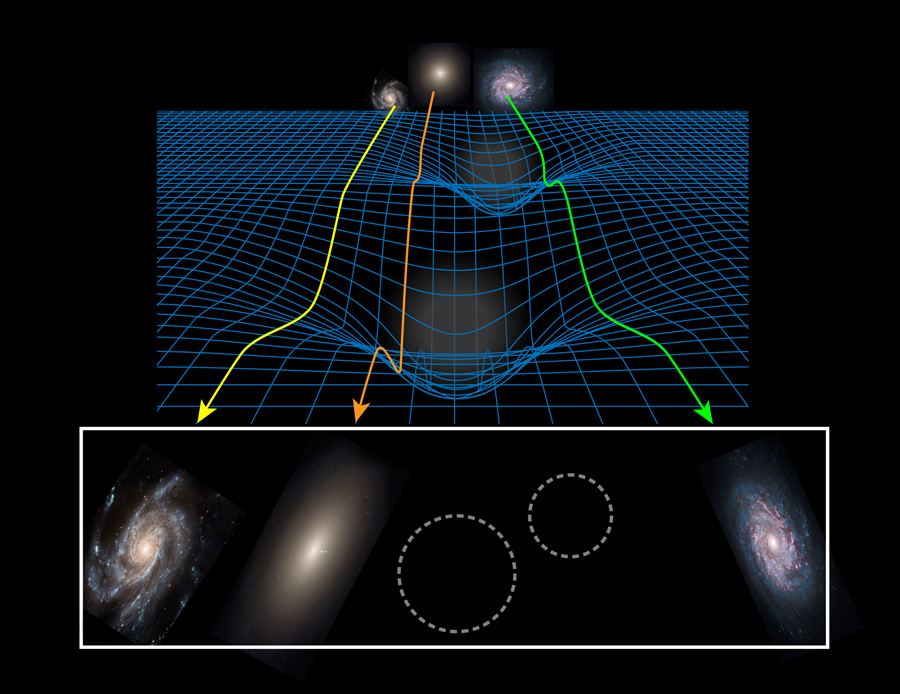
One hundred years after Albert Einstein proposed his theory of general relativity, a theoretical physicist, Erik Verlinde from the University of Amsterdam, proposes a revision, suggesting that gravity is not a fundamental force of nature, but an “emergent phenomenon.” Now, six years after Verlinde’s bold paper challenged the very nature of gravity, a team of astronomers led by Margot Brouwer finally tested the theory for the first time, showing that it is, in fact, more accurate at confirming the universe’s gravity distribution than Einstein’s own theory.
Verlinde’s emergent gravity theory draws one major distinction from Einstein’s theory of relativity: dark matter does not exist. Verlinde’s model of the universe claims to explain the behavior of gravity — as well as the source of extra gravity — without the presence of dark matter particles. Verlinde’s new theory correlates the amount of gravity present solely to the mass of the visible matter.
To test the theory, Brouwer and her team used Verlinde’s theory to calculate the gravity of more than 33,000 galaxies based on their visible mass and compared the results to the distribution of gravity measured by a phenomenon called gravitational lensing. They found that Verlinde’s prediction matched up well with the observed gravity distribution.
Gravitational lensing states that the gravity of galaxies distorts space, causing passing light to bend as if through a lens. As a result, galaxies closer to the observer act as a lens, slightly distorting the gravity of the galaxy positioned in the background. The effect can be measured to determine the distribution of gravity around galaxies in the foreground.
While gravity’s effect on light is proven, the amount bending does not account for the entire amount of matter present, suggesting the existence of an invisible source of particles to account for the added gravitational force — dark matter. Scientists consider the mass of dark matter as a free parameter to be adjusted to the observation, but Verlinde’s theory provides direct measurements without requiring free parameters. They found that at distances of up to a hundred times the radius of the galaxy, the force of gravity is much stronger than Einstein’s theory of gravity predicts.
Do note that Verlinde’s new theory is only applicable to isolated, spherical, and static systems — meaning that the existence of dark matter was not fully disproven. Many observations remain unexplained by the new theory. “The question now is how the theory develops, and how it can be further tested. But the result of this first test definitely looks interesting,” said Brouwer in the press release. Should the theory prove true, our understanding of the universe may radically change.
Source: Phys.org
Advertisement
Learn more about Electronic Products Magazine





